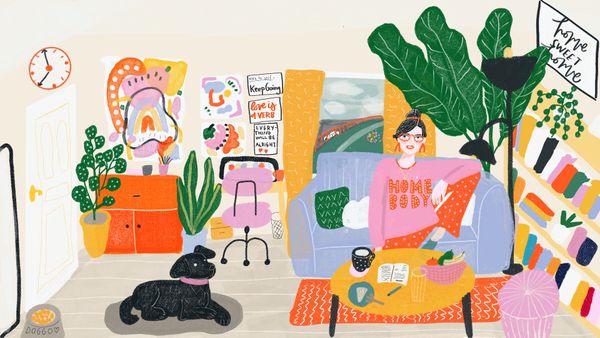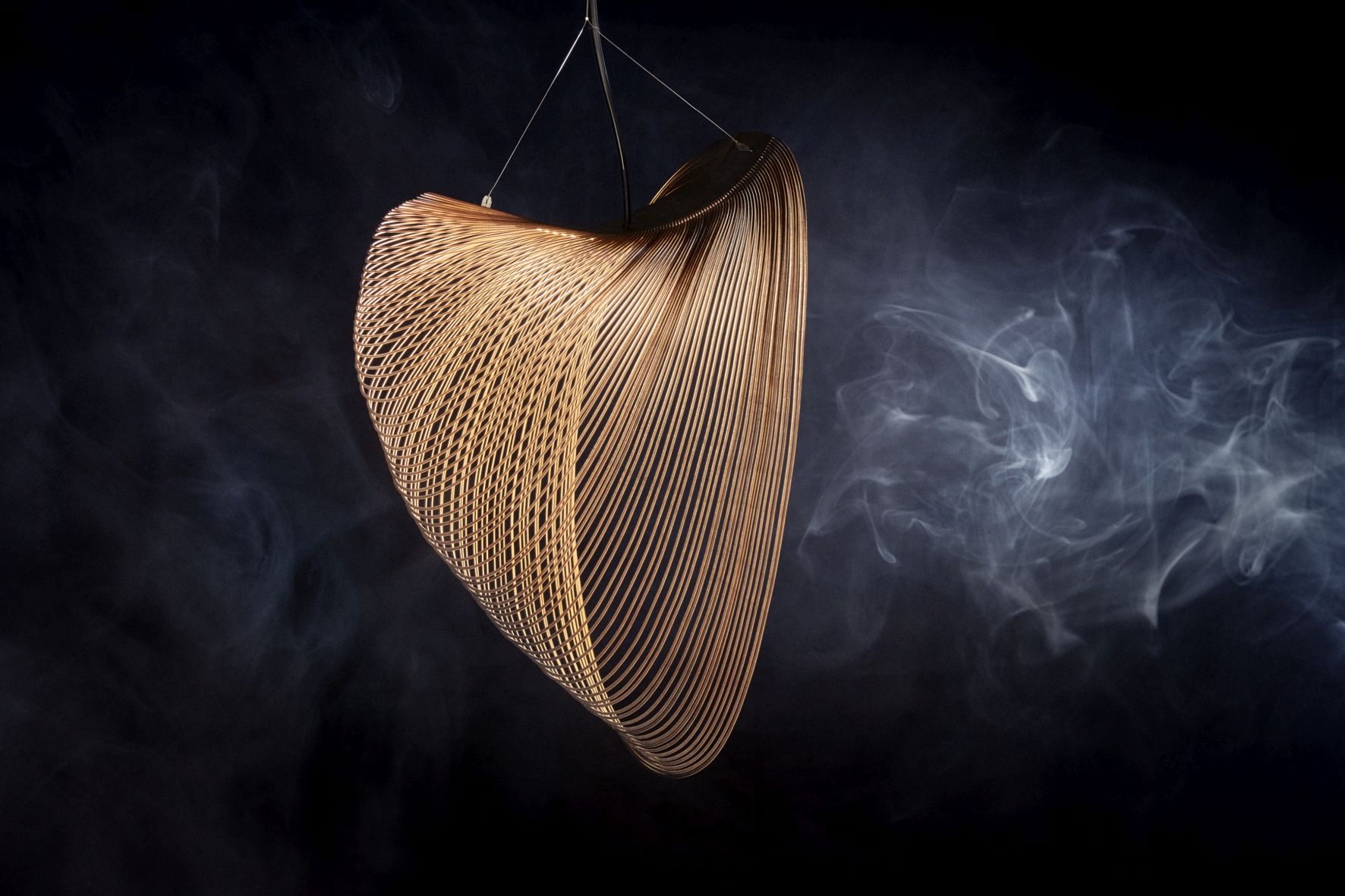The Best of award on the Design Plus festival in Frankfurt in 2020, contract with a world-famous design company – the story of the Illan lamp is a true design success story. We interviewed the Denmark-based designer of the lamp that could also pass as an abstract sculpture, Zsuzsanna Horváth.
Although the lamp design brought her true breakthrough, Zsuzsanna Horváth is not only successful as a designer. She started her studies at the department of architecture of Budapest University of Technology and Economics, during which she spent six months at Tampere University of Technology in Finland. Finally, her stay in Finland worked out so well that she settled down and started her product design studies there after graduation. We asked her about the path that led her to the Illan lamp and about her inspiration.

After graduating from the department of architecture, you studied product design at Altao University. What did you like the most in the time spent there?
I loved living in Helsinki, my apartment was close to the university, which was still at the Arabian campus back then (the art department also moved to Otaniemi last year). During the first weeks at the university, we learnt how to use the most important wooden and metal machinery, how to saw, weld, and then we were thrown into deep water right away: we had to design two chairs from plywood and metal, and we also had to manufacture them. I enjoyed learning new things like that very much and that I could see the output of it instantly. I think that their form of training is very beneficial especially if someone’s trying to obtain their second degree: there are not too many mandatory subjects and many freely elective ones or ones that can elected within a certain framework so I could cherry-pick from the abundance of fascinating courses. I learnt laser-cutting at the university, too, which also became the topic of my diploma project.
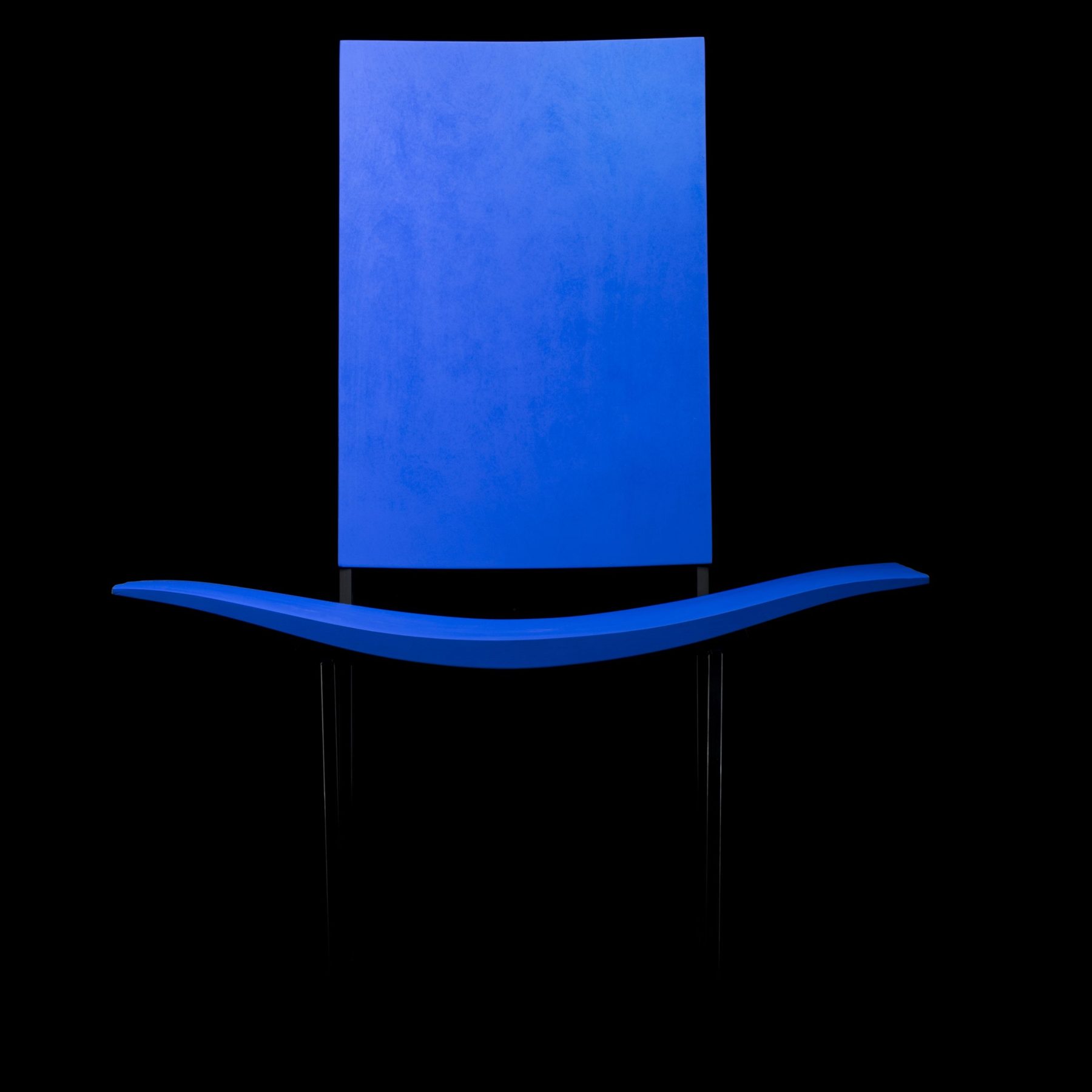

Currently you are living in Denmark and lead your own venture. Did you manage to find a balance between product design and architecture?
I primarily focus on my own design studio but I also maintain my online store and I work with architecture projects here and there. My studio’s profile mostly includes designing furniture and lamps. Recently I have been working on my projects to be showcased in the furniture fair in Milan, but since it is cancelled, I have more time to develop the details of the more complicated products.

In terms of the architecture projects, if I have a chance, I work for my previous workplace, Vapaavuori Architects located in Turku, Finland. I participated in designing the start and final station of the funicular in Turku with them.
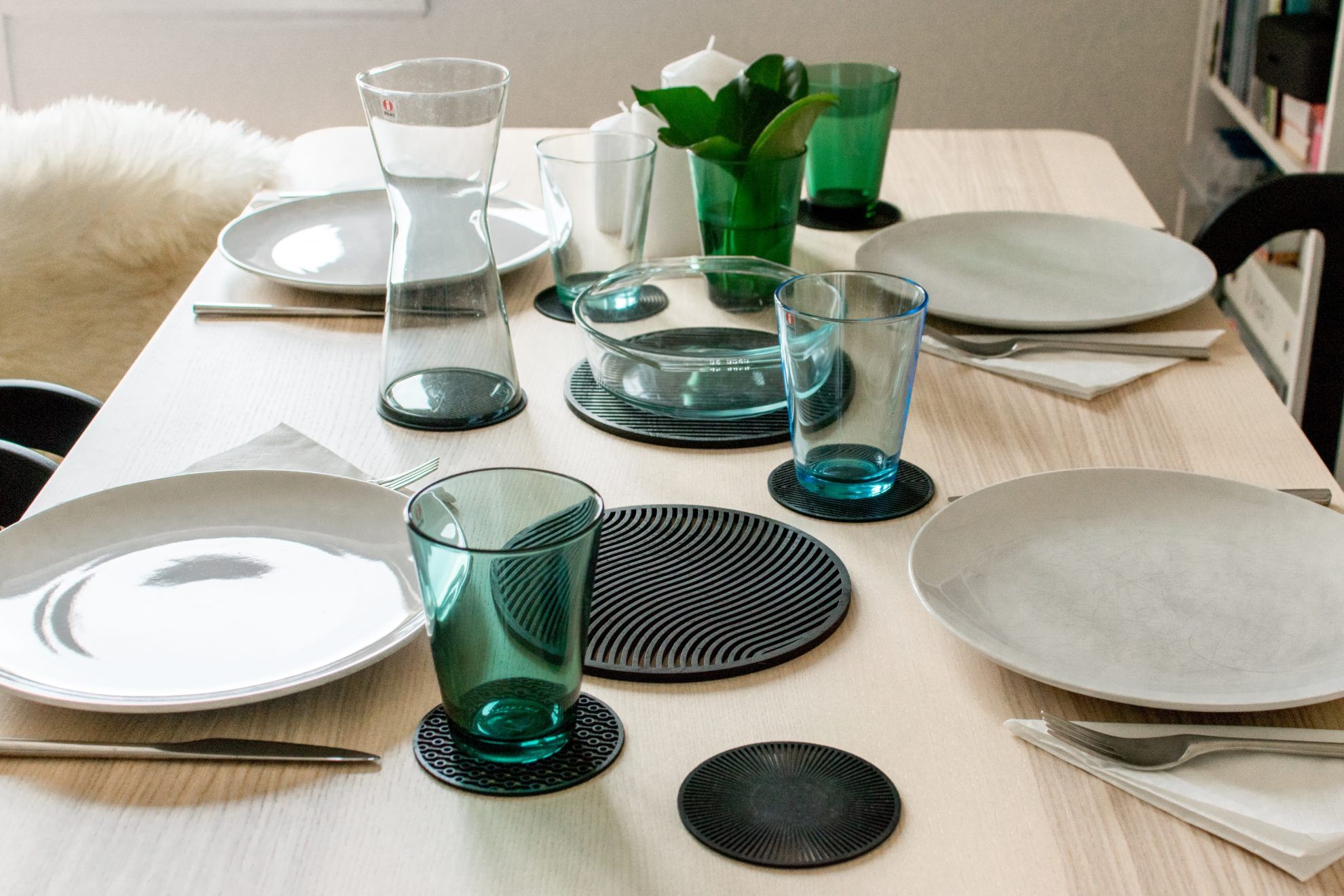
I sell laser-cut home decor items and jewelry in the Strips & Stripes online store. These are smaller products that I make here, in Copenhagen. The main thought behind this line is that there should be design products available for everyone, not only super expensive luxury items.
You have lived and worked in Finland and Denmark, as well. Which would you pick if you had to choose: Finnish or Danish design?
I’s hard to tell, but if I had to pick one, I would rather say Finnish, because it’s simple, natural, with authentic materials. As I see it, the two countries have different characteristics. Denmark is strong on the furniture line. Of course there is also design furniture in Finland, it’s enough to mention the classic pieces of Alvar Aalto, but I think the Finnish are stronger in the field of porcelain and glass products. The countries are similar in that the general population are less open to new products, they rather reach back to the classic pieces. Although this is not good for young designers, the fact that every household includes an Iittala and Arabia product, and here, in Denmark, the Louis Poulsen or Gubi lamps are common accessories of flats has its beauty. Both nations are very proud of their famous product designers. Luckily there are initiatives that also help young and up-and-coming designers break into this traditional atmosphere, including Young Finnish Design.
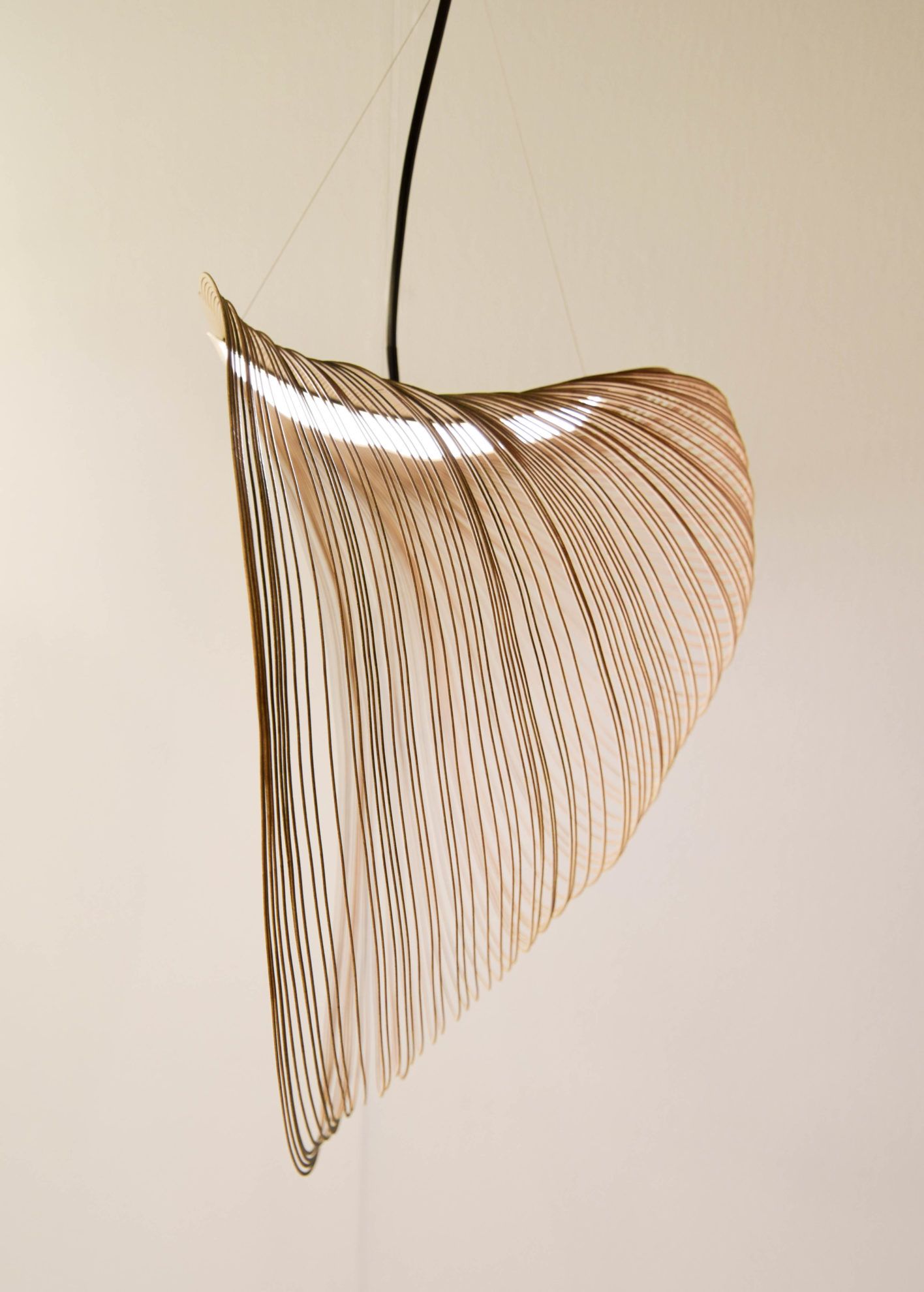
Your Illan lamp is wildly popular. How did the creative process and then the collaboration with Luceplan take place?
Illan is based on my diploma project, my experimenting with laser-cutting. I experimented with cutting papers for a year, with different simple geometric cutting patterns, and then I tried to select the exciting pieces out of these and find out what kind of products I could make from them: so I approached the general product design process the other way around.
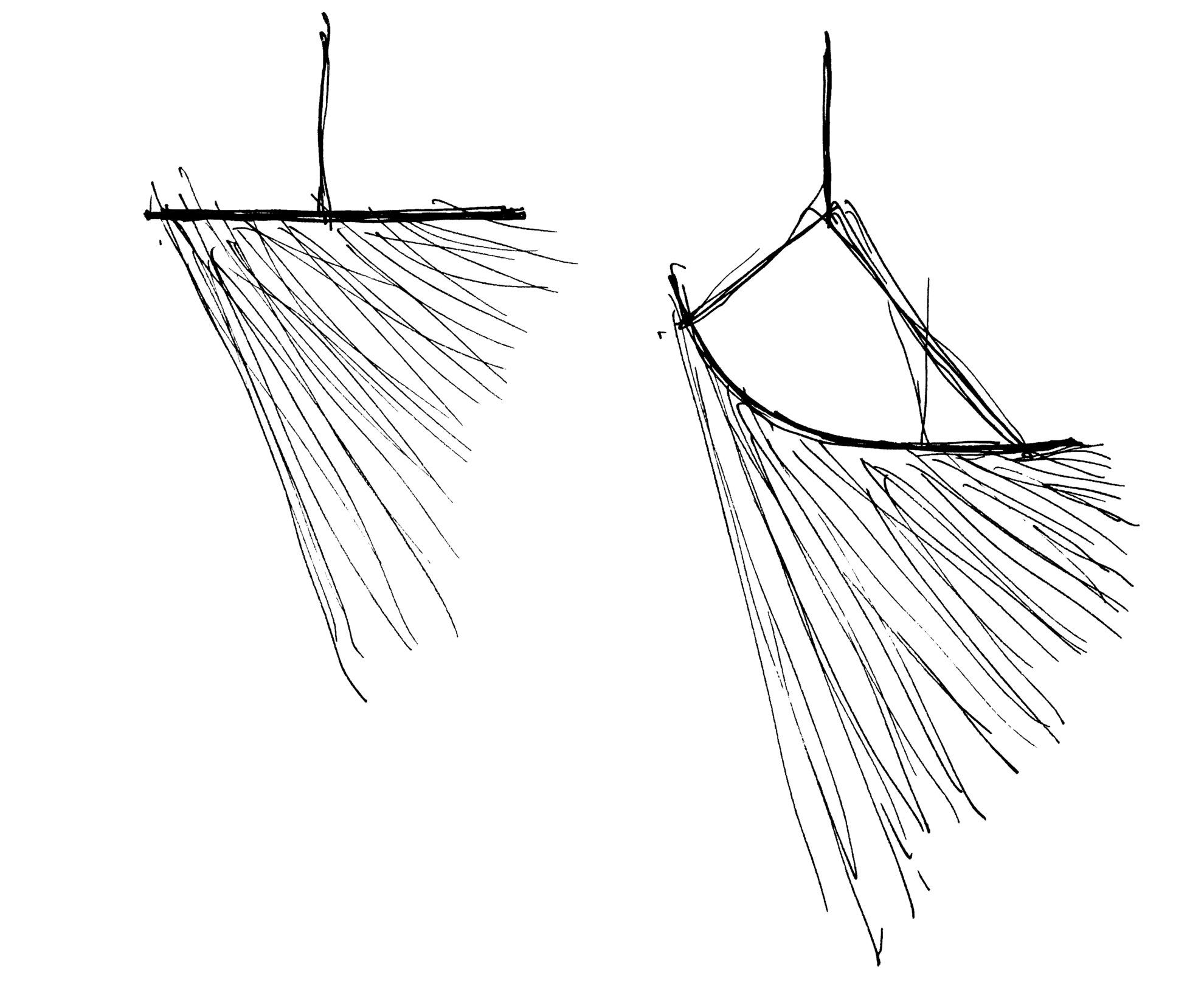
“The cutting pattern of the Illan lamp consists of concentric circles, which are connected to an uncut part. When I first held it in my hand, I knew instantly that this would look great as a lamp, but I still had to find the perfect material and light source. I chose this special flexible plywood and the very thin flexible OLED panel, which I used for creating the prototype, in the course of further experiments.”

I presented the prototype in 2017, at the furniture exhibition in Stockholm and then at Tendence in Frankfurt in the very same year. Finally it found a manufacturer in 2018 at the furniture fair in Milan, where I exhibited it at my booth at SaloneSatellite. This is an area established for new, young designers, and also a preferred spot for manufacturers. The Italian Luceplan stood out from all the other interested ones, whose product portfolio was a perfect match for the lamp. They were also very sympathetic in person, with their relevant professional questions and straightforward, professional attitude. After we signed the contract, product development continued with elaborating the details, for example, we replaced the OLED with high intensity LED light bulbs, so now the lamp cannot only function as mood lighting.
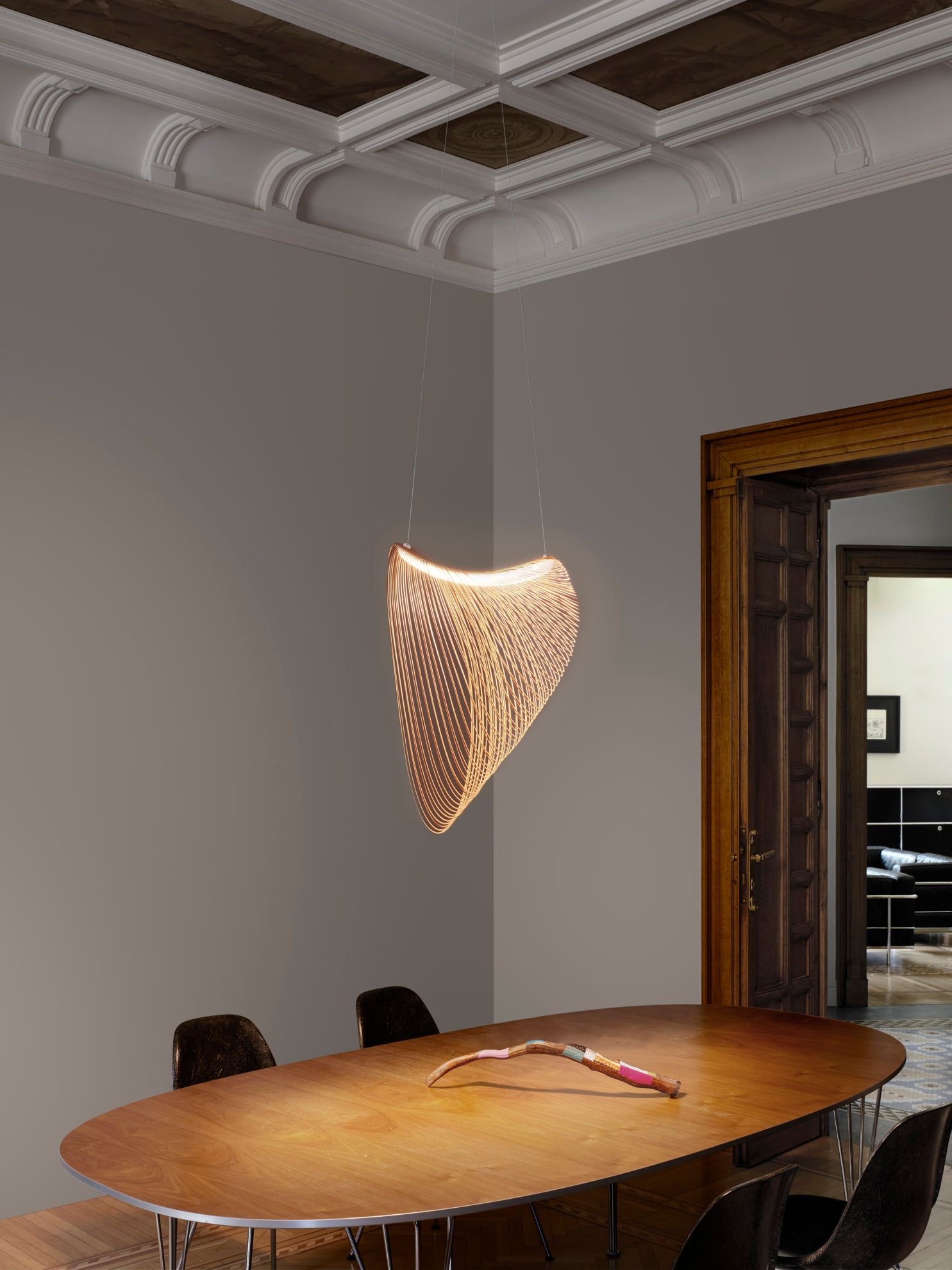
How does the quarantine influence your everydays in Copenhagen?
As working from home is recommended in Denmark, too, and all educational institutions have been shut down, currently I am playing with my 11 months old son in the biggest part of the day at home (we build castles out of the pillows of the couch) until my husband works. As originally I would have been preparing for the fair in Milan in March and April, and it’s cancelled, it’s not a problem if I can only work one or two hours a day. Despite the fact that the fair has been postponed to next year, I must continue my work so that my products can be ready in time, so I primarily focus on computer modelling and elaborating the details at the moment. I also started a grasshopper course, which will come in handy for creating my laser-cutting files. My online store is still running, so I designed and created an abstract hanging mobile for it, for which I have already cut out the wooden components earlier. All in all I keep myself busy, but I hope isolation will not last too long.
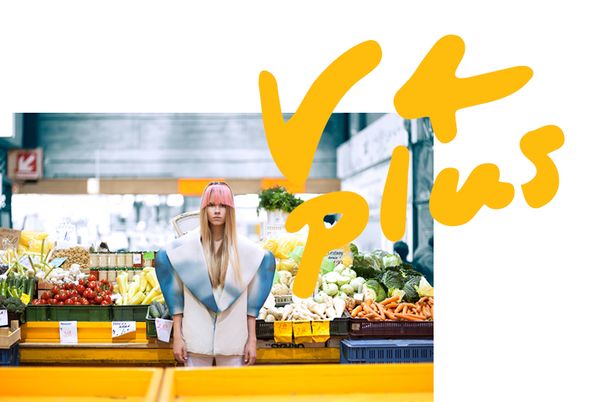
V4PLUS | Our favorite Slovakian brands_05
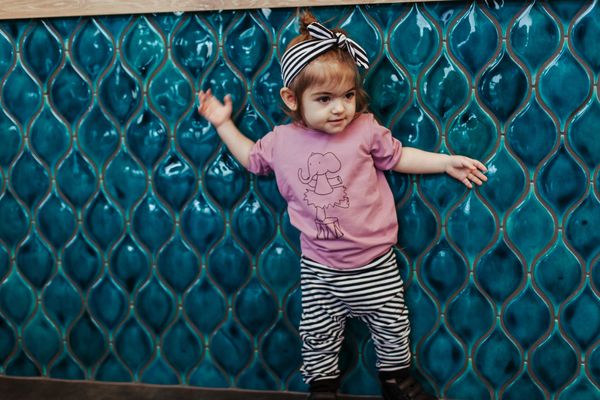
Support Hungarian design! | KIDS
